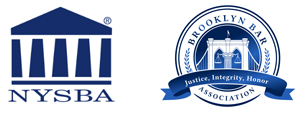In Catsiapis v Pardalis & Nohavicka, LLP, 2023 NY Slip Op 04185 [2d Dept Aug. 9, 2023], the court dealt with Judiciary Law Section 487, holding:
An action to recover damages for legal malpractice must be commenced within three years of the accrual of the cause of action regardless of whether the underlying theory is based in contract or tort (see CPLR 214[6]). An action to recover damages for attorney deceit under Judiciary Law Section 487 is subject to the six-year statute of limitations set forth in CPLR 213(1) (see Melcher v. Greenberg Traurig, LLP, 23 N.Y.3d 10, 15, 988 N.Y.S.2d 101, 11 N.E.3d 174). A legal malpractice action that also alleges a cause of action to recover damages for attorney deceit under Judiciary Law Section 487 must be dismissed as time-barred if not commenced within three years of the accrual of the cause of action, if the Judiciary Law Section 487 cause of action is premised on the same facts as the legal malpractice cause of action and does not allege distinct damages (see Benjamin v. Allstate Ins. Co., 127 A.D.3d 1120, 1121, 7 N.Y.S.3d 550; Farage v. Ehrenberg, 124 A.D.3d 159, 169, 996 N.Y.S.2d 646).
Here, the defendants demonstrated, prima facie, that the instant action was commenced after the expiration of the three-year statute of limitations applicable to the plaintiff’s legal malpractice cause of action (see CPLR 214[6]). Moreover, since the plaintiff’s causes of action alleging violations of Judiciary Law Section 487 are premised on the same facts as the legal malpractice cause of action and do not allege distinct damages, they too are barred by the three-year statute of limitations (see Benjamin v. Allstate Ins. Co., 127 A.D.3d at 1121, 7 N.Y.S.3d 550; Farage v. Ehrenberg, 124 A.D.3d at 169, 996 N.Y.S.2d 646; see also Jemima O. v. Schwartzapfel, P.C., 178 A.D.3d 474, 475, 115 N.Y.S.3d 244).
Richard A. Klass, Esq.
Your Court Street Lawyer
#CourtStreetLawyer #litigation #legalmalpractice
Richard A. Klass, Esq., maintains a law firm engaged in civil litigation at 16 Court Street, 28th Floor, Brooklyn, New York. He may be reached at (718) COURT●ST or RichKlass@courtstreetlaw.com with any questions.
Prior results do not guarantee a similar outcome.
© 2023 Richard A. Klass








